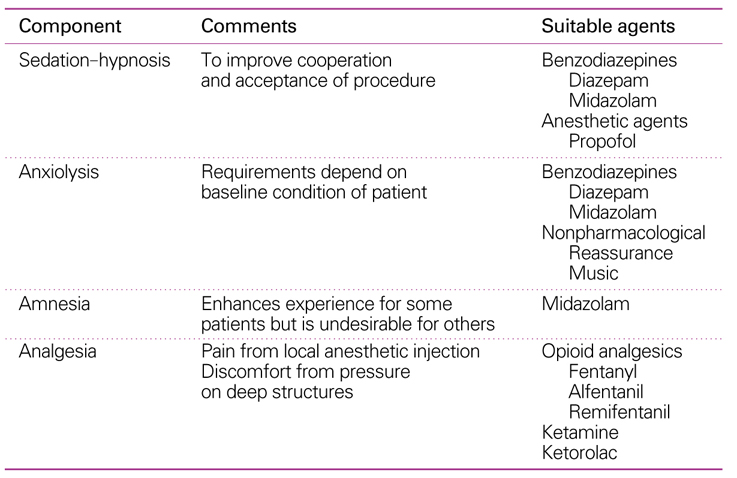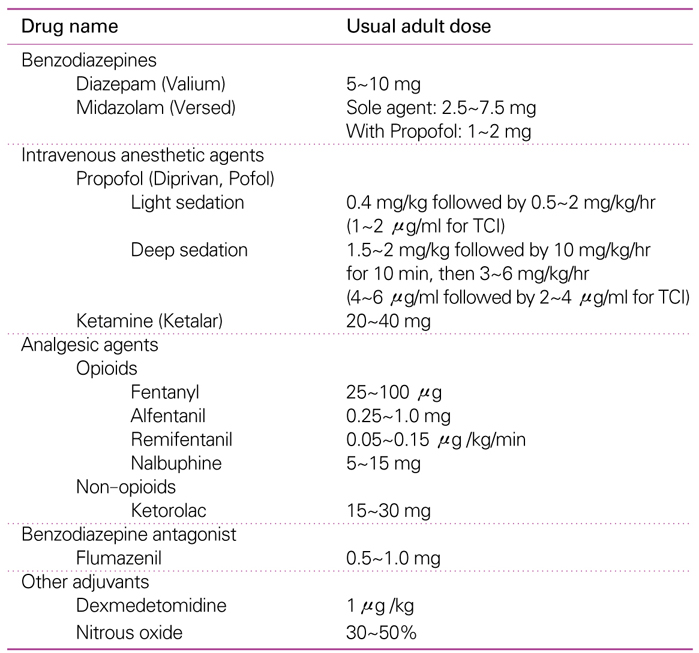 |
 |
- Search
| J Korean Med Assoc > Volume 50(12); 2007 > Article |
Abstract
Four major factors affecting anesthetic choices in surgery include the requirements of surgery (including type and location), anesthesiologist's experience and expertise, patient's preference, and the surgeon's preference. Especially, the type and location of surgical procedure may limit anesthetic techniques and choice of anesthetic agents. Available anesthetic techniques consist of three basic options: regional anesthesia, monitored anesthesia care (MAC), and general anesthesia. Recent advances in nerve stimulators and ultrasound guidance devices help to make regional blocks more successful with less complications. MAC is increasingly used with given advantages of supplying sedation, anxiolysis, additive analgesia, and improved safety to patients. Remarkable advances in general anesthesia include total intravenous anesthesia (TIVA) and fast-track anesthesia to use drugs with rapid action and short duration including propofol, desflurane, and sevoflurane, and advanced equipments such as target-controlled infusion pumps and monitoring devices of anesthetic depth. Advances in medical technology and pharmacology will continue to develop newer anesthetic agents, techniques, and patterns.
References
1. Hassan ZU, Fahy BG. Anesthetic choices in surgery. Surg Clin North Am 2005;85:1075-1089.
2. Hadzic A, Vloka J, Hadzic N, Thys DM, Santos AC. Nerve stimulators used for peripheral nerve blocks vary in their electrical characteristics. Anesthesiology 2003;98:969-974.
3. Marhofer P, Chan VW. Ultrasound-guided regional anesthesia: current concepts and future trends. Anesth Analg 2007;104:1265-1269.
4. Liu SS, Salinas FV. Continuous plexus and peripheral nerve blocks for postoperative analgesia. Anesth. Analg 2003;96:263-272.
5. Rosencher N, Bonnet MP, Sessler DI. Selected new antithrombotic agents and neuraxial anaesthesia for major orthopaedic surgery: management strategies. Anaesthesia 2007;62:1154-1160.
6. American Society of Anesthesiologists. ASA updates its position on monitored anesthesia care. ASA Newsletter 1998;62.
7. Ghisi D, Fanelli A, Tosi M, Nuzzi M, Fanelli G. Monitored anesthesia care. Minerva Anestesiol 2005;71:533-538.
8. Oh YS. Monitored anesthesia care. Korean J Anesthesiol 2003;44:291-303.
9. Aono J, Ueda W, Mamiya K, Takimoto E, Manabe M. Greater incidence of delirium during recovery from sevoflurane anesthesia in preschool boys. Anesthesiology 1997;87:1298-1300.
10. Voepel-Lewis T, Malviya S, Tait AR. A prospective cohort study of emergence agitation in the pediatric postanesthesia care unit. Anesth Analg 2003;96:1625-1630.
11. Grottke O, Dietrich PJ, Wiegels S, Wappler F. Intraoperative wake-up test and postoperative emergence in patients undergoing spinal surgery: a comparison of intravenous and inhaled anesthetic techniques using short-acting anesthetics. Anesth Analg 2004;99:1521-1527.
12. Ahlen K, Buckley CJ, Goodale DB, Pulsford AH. The "propofol infusion syndrome": The facts, their interpretation and implications for patient care. Eur J Anaesthesiol 2006;23:990-998.
13. Bray RJ. Propofol infusion syndrome in children. Paed Anaesth 1998;8:491-499.
14. Martin PH, Murthy BV, Petros AJ. Metabolic, biochemical and haemodynamic effects of infusion of propofol for long-term sedation of children undergoing intensive care. Br J Anaesth 1997;79:276-279.
15. Cornfield DN, Tegtmeyer K, Nelson MD, Milla CE, Sweeney M. Continuous propofol infusion in 142 critically ill children. Pediatrics 2002;110:1177-1181.
16. Egan TD, Lemmens HJ, Fiset P, Hermann DJ, Muir KT, Stanski DR, Shafer SL. The pharmacokinetics of the new short-acting opioid remifentanil (GI87084B) in healthy adult male volunteers. Anesthesiology 1993;79:881-892.
17. Gerlach AT, Dasta JF. Dexmedetomidine: an updated review. Ann Pharmacother 2007;41:245-252.
18. Marshall SI, Chung F. Discharge criteria and complications after ambulatory surgery. Anesth Analg 1999;88:507-517.
Table 3
Procedures that can be performed with MAC and indications for anxiety control, sedation and analgesia in each procedure (7)

- TOOLS
-
METRICS

-
- 0 Crossref
- Scopus
- 1,425 View
- 10 Download
-
Related articles in
J Korean Med Assoc -
Anesthetic Cares for Ambulatory Surgery1997 April;40(4)
Robotics and Surgery2006 May;49(5)
Oncoplastic Breast Surgery2009 October;52(10)
Anesthetic management of the bariatric surgery2012 October;55(10)










